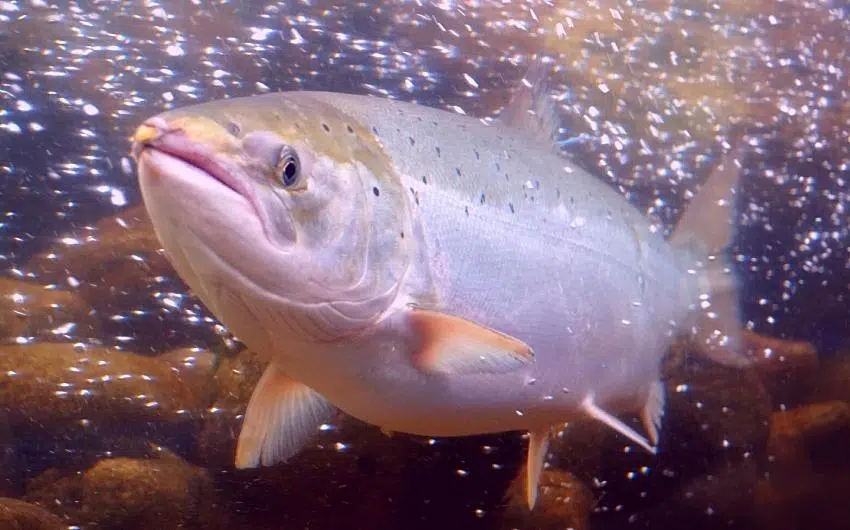Salmon are one of the most popular and commonly eaten fish Their pink flesh is tasty and nutritious But before you take a bite of salmon sashimi or a fillet, you may wonder – are salmon carnivores?
The simple answer is yes, salmon are carnivores. Let’s take a closer look at the salmon diet.
The Salmon Diet Changes With Age
As a salmon grows from a young fish to an adult fish, its diet changes, just like ours does.
-
Salmon eggs and fry (baby salmon) that have just hatched get their food from the yolk sac.
-
After absorbing the yolk young salmon called parr start feeding on tiny aquatic insects and larvae (zooplankton).
-
Once salmon reach the juvenile stage called smolt, their diet shifts to bigger prey like amphipods, other small crustaceans, and aquatic insects.
-
Adult salmon at sea primarily eat small fish like herring, sand lance, and capelin. Some bigger salmon species like Chinook may eat larger fish too.
-
Besides small fish, adult salmon also consume squid, krill and other marine creatures.
So at every stage of life, salmon are carnivores. They depend on protein-rich animal matter for food.
Different Salmon Species Have Similar Diets
There are seven species of Pacific salmon and one Atlantic salmon species. Though they have some differences, all salmon are carnivorous.
Popular West Coast salmon like:
- Chinook (king)
- Sockeye (red)
- Coho (silver)
- Pink (humpback)
And East Coast Atlantic salmon all switch from eating insects and zooplankton as juveniles to a fish-based diet as adults.
Some interesting differences:
- Sockeye salmon have more gill rakers to filter tiny zooplankton.
- Pink salmon are the smallest species and eat the smallest marine prey.
- Chinook salmon reach the largest sizes and eat bigger fish than other salmon.
But regardless of variations in size and prey, all salmon species are meat eaters.
Why Are Salmon Carnivores?
Salmon are biologically adapted to get energy and nutrients from other animals. Here’s why:
-
Protein for growth: Salmon need high protein to support their rapid growth. Animal foods provide complete proteins with all the essential amino acids salmon require.
-
Fat for energy: Salmon make long upstream migrations and need energy-dense foods. Fatty fish and marine creatures provide more calories than low-fat plant foods.
-
Nutrients from the sea: Small fish and marine invertebrates contain omega-3s, vitamin D, iodine, and other nutrients that salmon need. Plants don’t provide these ocean-sourced nutrients.
So in essence, the carnivorous diet offers salmon the perfect package of protein, fats, vitamins, and minerals to thrive and grow.
In Short, Yes Salmon Are Carnivores!
From the minute they form until they complete their life cycle, salmon rely on animal foods. Juvenile salmon start by eating insects and larvae before switching to fish and other marine creatures as adults.
The high-protein and high-fat carnivorous diet provides salmon with the dense nutrition they require to achieve their amazing growth and epic migratory journeys.

1 Expert Answer Best Newest Oldest By:
Allen P. answered 05/21/19 Tutor
A Real Certified Teacher
There are 10 times as many primary consumers (fish that eat plants) as secondary consumers (fish that eat other primary consumers). Then there are 100 times as many primary consumers as tertiary consumers (fish that eat other fish and plants).
I came to this conclusion via following the rule of energy transfer through food pyramids. Rule of 10%.
Ranch and Parmesan Salmon for the [Carnivore Diet]
Is salmon a carnivore?
Is Salmon a Fish Carnivore?Salmon are unique fish because they transition from a life in the ocean to life in freshwater. The Pacific salmon species of salmon spend two to five years in the ocean. When it’s time to spawn, they return to the freshwater rivers and streams where they grew up.
Do salmon eat fish?
When salmon are young, they are not big enough to eat fish. They will typically feed on zooplankton, a wide range of small invertebrates that inhabit the water column. Young salmon spend the first few years of their lives in freshwater, feeding on small aquatic insects like mayflies and stoneflies. Sometimes they’ll eat some fish!
Are Atlantic salmon carnivorous or anadromous?
The Atlantic salmon species of salmon usually are anadromous, which means they spend most of their time in the ocean but travel up freshwater rivers and streams to spawn. Before spawning, both fish species shift to a carnivorous diet of small fish, crustaceans, and zooplankton.
Are Pacific salmon omnivores?
Pacific Salmon are omnivores. They eat smaller fish, crustaceans, and insects. When eating, food enters the digestive tract through the mouth. From the mouth, the food passes through a short tube called the esophagus to the stomach, which partially breaks down the food. From the stomach food passes through an organ humans do not have.
